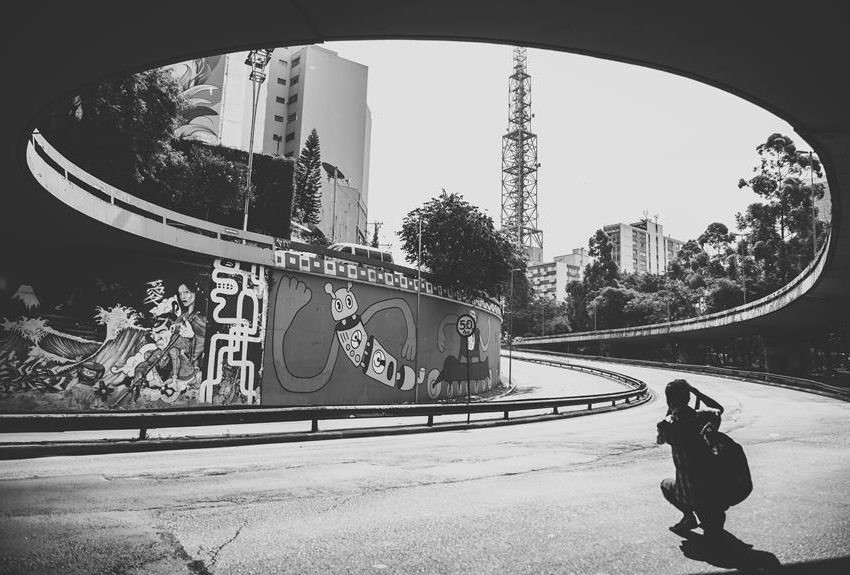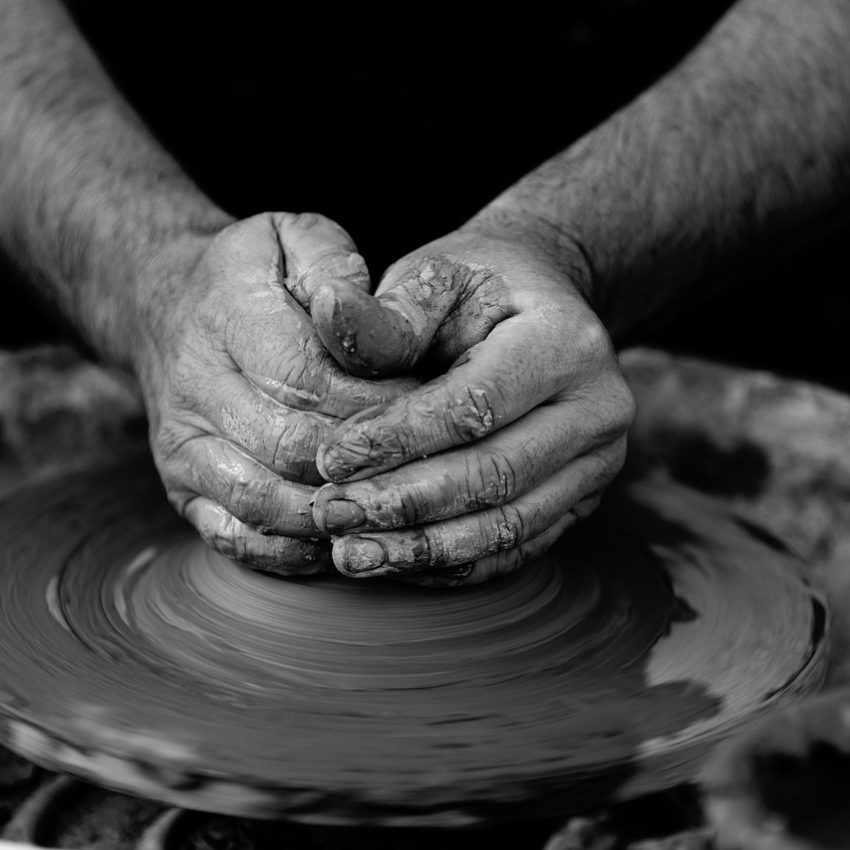Exploring Tenebrism
Caravaggio's Influence on Baroque Paintings
Defined by its stark contrasts of darkness and luminosity, Tenebrism emerged as a powerful force within Baroque paintings, infusing works with an undeniable intensity and emotion.
Tenebrism holds a special place in the world of art enthusiasts, students hungry for knowledge about dramatic illumination, history buffs peering into the 17th century, and painters seeking inspiration from the painter Caravaggio’s technique. Baroque artists masterfully wove tales of human drama and divine purpose on their canvases through this juxtaposition of shadow and brilliance, employing Tenebrism to cast a visual language that narrates the extreme contrasts of light and dark.
The Origins of Tenebrism
The origins of Tenebrism as an artistic technique can be traced back to the influential Italian artist Caravaggio, who brought this dramatic use of light and shadow to the forefront during the Baroque period.
Tenebrism, derived from the Italian term “tenebroso”, meaning dark or murky, is characterised by a stark contrast between illuminated areas and deep shadows, creating a spotlight effect, evoking a sense of heightened drama and intensity within a painting.
Tenebrism serves the sole purpose of delivering a striking and dramatic impact, whereas chiaroscuro encompasses a wider scope, incorporating subtler contrasts of light to enhance the illusion of depth and three-dimensionality.
Unlike chiaroscuro, which also plays with light and shadow but seeks more gradual transitions between dark and light areas, Tenebrism sharpens this contrast to emphasise specific elements or create a sense of mystery and depth.
Difference between Tenebrism and Chiaroscuro
To grasp Tenebrism, it’s essential to comprehend chiaroscuro and recognize it as a foundational element of this type of painting, where extreme contrasts of light and dark create not just aesthetic appeal but a profound narrative depth. Chiaroscuro, another Italian lighting technique, plays with light and shadow.
However, unlike tenebrism, chiaroscuro employs softer contrasts to evoke realism and depth rather than the dramatic impact pursued by tenebrism. Renowned for his mastery of tenebrism, the Italian painter Caravaggio is often associated with the technique to the extent that it’s sometimes referred to as caravaggism. But let’s move beyond theory and explore some art.
Chiaroscuro
Chiaroscuro, derived from the Italian words chiaro, meaning “light,” and scuro, meaning “dark,” is an artistic technique utilized to portray the interplay of light and shadow, thereby giving depth to three-dimensional objects.
While there are indications that ancient Greek and Roman artists experimented with chiaroscuro effects, it was during the late 15th century that Leonardo da Vinci elevated the technique to its pinnacle, as evidenced in works like his Adoration of the Magi (1481).
Subsequently, chiaroscuro became a cornerstone technique for numerous painters, and by the late 17th century, the term was commonly used to characterize any artwork—be it painting, drawing, or print—that relied on this interplay for its visual impact.
Caravaggio: The Master of Light and Shadow
One of his most iconic paintings that exemplifies this technique is “The Calling of Saint Matthew.” In this masterpiece, Caravaggio expertly manipulates light to create an intense contrast between the illuminated figures and the enveloping darkness, drawing the viewer’s eye to specific focal points with precision.
Analysing key Caravaggio paintings showcases his technical prowess and reveals his unique ability to infuse emotion and narrative depth through the interplay of light and shadow, exemplifying why he is considered a true master of Tenebrism in the realm of Italian Baroque art.
Take, for instance, “Judith Beheading Holofernes,” where the stark contrast between light and dark heightens the tension and brutality of the scene. Caravaggio’s impactful use of Tenebrism captivated audiences during his time and continues to inspire artists today, solidifying his reputation as a true master of Tenebrism.
Jusepe de Ribera
Caravaggio’s influence on future Baroque painters, including his followers like Jusepe de Ribera, cannot be overstated, as art historians often highlight his contributions to the dramatic illumination characteristic of the tenebrism style. His innovative techniques sparked a revolution in art that rippled through generations of artists.
Figures like Artemisia Gentileschi drew inspiration from Caravaggio’s bold use of shadows to convey power dynamics and psychological intensity in her works, reflecting the influence of tenebrism, a pivotal art term, on her style. His lasting impact on art history can be seen in how Tenebrism became synonymous with Baroque painting, forever changing how artists depicted light and shadow.
Caravaggio’s legacy as the master of light and shadow extends far beyond his time, shaping art history for centuries. His pioneering spirit elevated Tenebrism to new heights, leaving an indelible mark on Baroque paintings and inspiring countless artists to embrace the dramatic interplay between darkness and illumination in their works.
Tenebrism Beyond Caravaggio
Artemisia Gentileschi
While Caravaggio’s mastery of Tenebrism left an indelible mark on Baroque art, his innovative approach also inspired artists who sought to harness the expressive power of light and shadow in their works.
One such painter deeply influenced by Caravaggio, an Italian painter, was Artemisia Gentileschi, a Baroque artist known for her powerful depictions of biblical and mythological women, marking her contributions to the legacy of Tenebrism in Italian Baroque painting.
Gentileschi’s “Judith Slaying Holofernes” exemplifies her adept use of Tenebrism, with dramatic contrasts between light and dark emphasising the scene’s intensity and underlying themes of justice and female strength.
Francisco de Zurbarán
Additionally, Spanish Baroque master Francisco de Zurbarán embraced Tenebrism in his religious paintings, infusing them with a spiritual aura that captivated viewers, akin to the effect achieved by Georges de la Tour with his use of a single candle.
In works like “Saint Serapion,” Zurbarán intensifies the sombre mood through stark chiaroscuro effects, enhancing the saint’s martyrdom while inviting contemplation on faith and mortality. Through subtle variations in lighting and shadow, Zurbarán skillfully highlights the spiritual fervour central to his subjects, showcasing a unique interpretation of Tenebrism within the Spanish artistic landscape.
Gherardo delle Notti
Across different regions in Europe, Tenebrism took on distinct characteristics as artists infused their cultural identities into this shadowy technique, with Jusepe de Ribera and Georges de la Tour contributing significantly to its development.
Dutch painter Gerrit van Honthorst, known as Gherardo delle Notti (“Gerard of the Night”), adopted Tenebrism to create intimate nocturnal scenes brimming with warmth and intimacy.
His work, “Adoration of the Shepherds”, demonstrates a softer take on Tenebrism than Caravaggio’s intensity, illustrating how artists personalised this style to convey their narratives uniquely.
Tenebrism’s evolution and regional adaptations highlight its versatility as a technique that transcended borders while retaining its core emphasis on theatrical lighting effects for dramatic impact.
Candlelight TraDITION
Georges de La Tour, Rembrandt
Beyond Caravaggio’s followers, tenebrism is also associated with the “candlelight tradition” of the seventeenth century. Artists like Georges de La Tour, who masterfully illuminated scenes with single candles, and Rembrandt, renowned for his chiaroscuro techniques, exemplify this tradition.
Adam de Coster & Godfried Schalcken
Adam de Coster in Flanders and Godfried Schalcken in the Netherlands distinguished themselves as leading tenebrists, crafting scenes where candlelight played a central role, often obscured by surrounding objects. Unlike their Spanish counterparts, these northern painters aimed for a sense of tranquility and stillness, skillfully blending light and shadow to evoke nuanced emotions across their canvases.
Techniques Behind the Shadows: Creating Depth through Contrast
One of the defining features of Tenebrism in Baroque paintings is its remarkable ability to create depth and evoke powerful emotions through the skilful use of light and shadow.
Artists utilised various techniques to achieve the dramatic contrasts that characterise Tenebrist’s works, setting them apart from other painting styles of the period.
By strategically placing intense light areas against deep, velvety shadows, painters could draw the viewer’s eye to specific focal points within the composition, adding a sense of mystery and drama to their pieces.
In Baroque masterpieces employing Tenebrism, shadows played a crucial role in shaping space and form, often contributing as much—if not more—to the overall impact of a painting than elements painted in a whole light.
These deep shadows created a sense of volume and three-dimensionality and imbued artworks with heightened emotional intensity. By rendering shadows with precision and care, artists could convey nuanced moods and atmospheres within their scenes, eliciting visceral reactions from viewers drawn into these worlds of chiaroscuro extremes.
Moreover, artists honed their craft by skillfully manipulating light sources within their compositions to enhance the drama and intensity of their works, a technique pivotal in the type of painting known for its contrasts of light and dark.
Whether casting light from an unseen window to spotlight a central figure or using candlelight to illuminate a poignant gesture or expression, these intentional choices added layers of meaning and heightened visual interest to Tenebrist paintings.
By mastering the interplay between light and shadow, Baroque artists achieved technical excellence and profound storytelling capabilities that continue to captivate audiences centuries later, marking a significant period in the history of fine art.
Symbolism and Narrative Impact: Interpreting Tenebrist Paintings
In Baroque art, Tenebrism is a powerful tool for artists to embed symbolic meanings and evoke deep emotions within their works, often through the gloomy interplay of light and shadow.
The strategic use of light and shadow in Tenebrist paintings transcends mere aesthetics, often functioning as a visual language to convey narratives or moral lessons.
For instance, in Caravaggio’s iconic painting “The Calling of Saint Matthew,” the stark contrast between light and shadow symbolises the divine intervention illuminating the chosen saint amidst the darkness of his surroundings. This interplay of light guides the viewer’s focus and underscores the spiritual transformation depicted in the scene.
Tenebrism’s employment in Baroque artworks extends beyond merely creating dramatic effects; it is intricately woven into storytelling elements to provoke specific emotional responses from viewers.
When exploring Artemisia Gentileschi’s compelling piece “Judith Slaying Holofernes,” the intense chiaroscuro technique intensifies the sense of urgency and empowerment as Judith cloaked in shadows, executes her heroic act under a beam of light.
This deliberate manipulation of light enhances the narrative tension and accentuates the thematic contrast between good and evil, ultimately heightening the impact of the artwork on its audience.
Analysing Tenebrist’s paintings reveals their innate ability to captivate viewers through rich visual storytelling capabilities that transcend time and cultural boundaries.
Consider Rembrandt van Rijn’s masterpiece “The Night Watch,” where dynamic lighting defines characters and conveys a sense of movement within a static composition.
The interplay of light and shadow here is a metaphor for societal dynamics and individual heroism, inviting viewers to immerse themselves in a layered narrative that unfolds through nuanced contrasts.
Through such masterful compositions, artists harnessed Tenebrism to imbue their works with depth, emotion, and an enduring allure that resonates with audiences today.
By decoding the symbolic resonance embedded within Tenebrist paintings, art enthusiasts can uncover hidden narratives, explore complex emotions, and appreciate these works’ profound impact throughout art history.
The ability of artists to harness shadows and light not just for aesthetic purposes but as integral components of storytelling showcases the timeless elegance encapsulated by Tenebrism.
As viewers engage with these enigmatic compositions, they are invited into a world where darkness intertwines with illumination to reveal intricate tales steeped in symbolism—a testament to the enduring power of artistic expression through light and shadow in Baroque masterpieces.
Legacy of Tenebrism: Influence on Modern Art Movements
As the Baroque era waned, the dramatic interplay of light and shadow characteristic of Tenebrism, often achieved with just a single candle, did not fade into obscurity but continued to influence the art term lexicon and practical applications in painting.
Instead, the legacy of this striking technique persisted, leaving an indelible mark on subsequent art movements, illustrating the difference between tenebrism and chiaroscuro.
One such connection can be seen in the Romantic era, where artists embraced the expressive power of light inspired by Tenebrist’s works, a style of painting characterized by dramatic illumination that traces its roots back to the 17th century.
Romantic painters like Eugène Delacroix and Francisco Goya sought to evoke intense emotions through light and shadow, reflecting a continuation of the expressive qualities first explored by Caravaggio.
Moreover, in the Realist movement that emerged later in the 19th century, artists drew upon Tenebrism’s emphasis on naturalistic lighting to depict scenes with heightened realism and emotional depth.
Painters like Gustave Courbet utilised strong contrasts between light and shadow to bring attention to social issues and authentically capture raw human experiences.
The legacy of Tenebrism is evident in how Realist artists harnessed its techniques to imbue their works with a sense of truthfulness and immediacy, a practice that Jusepe de Ribera, a follower of Caravaggio, excelled in.
In contemporary art, echoes of Tenebrism can still be detected in artists who continue to explore the profound impact of light and dark within their compositions.
For instance, modern painters such as George de Goya find inspiration in the dynamic energy created by stark contrasts—paying homage to Caravaggio’s pioneering vision while infusing it with a fresh perspective.
By adapting Tenebrist techniques to suit their distinctive styles, these contemporary artists uphold the tradition of using light as a potent tool for storytelling and emotional resonance across different artistic landscapes.
Conclusion: Embracing the Enigmatic Beauty of Tenebrism
Delving into the enigmatic realm of Tenebrism, one cannot help but be captivated by its timeless allure and elegance. The masterful play of light and shadow in these artworks creates a sense of drama and depth, elevating the narratives within them to a sublime level, distinctly showcasing the difference between Tenebrism and chiaroscuro.
By appreciating the artistry within darkness, we understand how these Baroque masterpieces, deeply influenced by the term tenebrism, have stood the test of time, continuing to fascinate and inspire generations of viewers.





